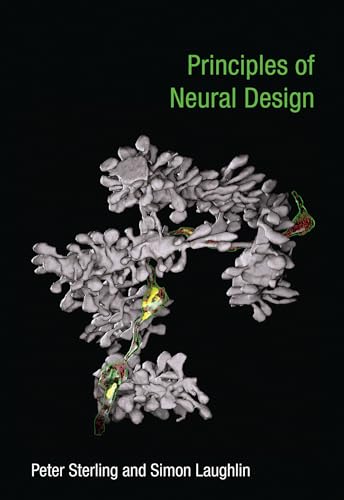Articoli correlati a Principles of Neural Design

Sinossi
Two distinguished neuroscientists distil general principles from more than a century of scientific study, “reverse engineering” the brain to understand its design.
Neuroscience research has exploded, with more than fifty thousand neuroscientists applying increasingly advanced methods. A mountain of new facts and mechanisms has emerged. And yet a principled framework to organize this knowledge has been missing. In this book, Peter Sterling and Simon Laughlin, two leading neuroscientists, strive to fill this gap, outlining a set of organizing principles to explain the whys of neural design that allow the brain to compute so efficiently.
Setting out to “reverse engineer” the brain—disassembling it to understand it—Sterling and Laughlin first consider why an animal should need a brain, tracing computational abilities from bacterium to protozoan to worm. They examine bigger brains and the advantages of “anticipatory regulation”; identify constraints on neural design and the need to “nanofy”; and demonstrate the routes to efficiency in an integrated molecular system, phototransduction. They show that the principles of neural design at finer scales and lower levels apply at larger scales and higher levels; describe neural wiring efficiency; and discuss learning as a principle of biological design that includes “save only what is needed.”
Sterling and Laughlin avoid speculation about how the brain might work and endeavor to make sense of what is already known. Their distinctive contribution is to gather a coherent set of basic rules and exemplify them across spatial and functional scales.
Le informazioni nella sezione "Riassunto" possono far riferimento a edizioni diverse di questo titolo.
Informazioni sull?autore
Peter Sterling is Professor of Neuroscience at the University of Pennsylvania School of Medicine. He is the coauthor (with Simon Laughlin) of Principles of Neural Design (MIT Press).
Simon Laughlin is Emeritus Professor of Neurobiology in the Department of Zoology at the University of Cambridge and a Fellow of the Royal Society.
Le informazioni nella sezione "Su questo libro" possono far riferimento a edizioni diverse di questo titolo.
GRATIS per la spedizione in U.S.A.
Destinazione, tempi e costiCompra nuovo
Visualizza questo articoloEUR 3,42 per la spedizione in U.S.A.
Destinazione, tempi e costiRisultati della ricerca per Principles of Neural Design
Principles of Neural Design (Mit Press)
Da: Bay State Book Company, North Smithfield, RI, U.S.A.
Condizione: good. The book is in good condition with all pages and cover intact, including the dust jacket if originally issued. The spine may show light wear. Pages may contain some notes or highlighting, and there might be a "From the library of" label. Boxed set packaging, shrink wrap, or included media like CDs may be missing. Codice articolo BSM.R2RV
Quantità: 1 disponibili
Principles of Neural Design (The MIT Press)
Da: WorldofBooks, Goring-By-Sea, WS, Regno Unito
Paperback. Condizione: Very Good. The book has been read, but is in excellent condition. Pages are intact and not marred by notes or highlighting. The spine remains undamaged. Codice articolo GOR009039519
Quantità: 1 disponibili
Principles of Neural Design (The MIT Press)
Da: The Maryland Book Bank, Baltimore, MD, U.S.A.
paperback. Condizione: Very Good. Reprint. Used - Very Good. Codice articolo 2-Z-5-0618
Quantità: 1 disponibili
Principles of Neural Design
Da: Books Puddle, New York, NY, U.S.A.
Condizione: New. pp. 568. Codice articolo 26375705941
Quantità: 3 disponibili
Principles of Neural Design Format: Paperback
Da: INDOO, Avenel, NJ, U.S.A.
Condizione: As New. Unread copy in mint condition. Codice articolo RH9780262534680
Quantità: Più di 20 disponibili
Principles of Neural Design Format: Paperback
Da: INDOO, Avenel, NJ, U.S.A.
Condizione: New. Brand New. Codice articolo 9780262534680
Quantità: Più di 20 disponibili
Principles of Neural Design
Da: Majestic Books, Hounslow, Regno Unito
Condizione: New. pp. 568. Codice articolo 370372234
Quantità: 1 disponibili
Principles of Neural Design
Da: GreatBookPrices, Columbia, MD, U.S.A.
Condizione: New. Codice articolo 29162668-n
Quantità: Più di 20 disponibili
Principles of Neural Design
Da: GreatBookPrices, Columbia, MD, U.S.A.
Condizione: As New. Unread book in perfect condition. Codice articolo 29162668
Quantità: Più di 20 disponibili
Principles of Neural Design
Da: Biblios, Frankfurt am main, HESSE, Germania
Condizione: New. pp. 568. Codice articolo 18375705951
Quantità: 1 disponibili

